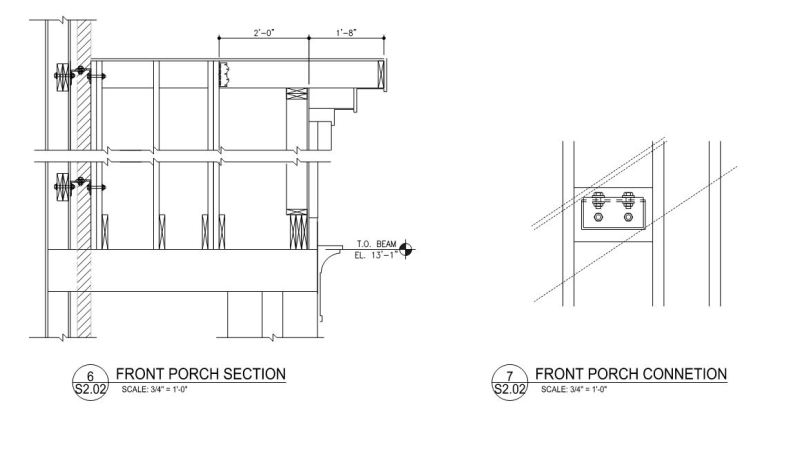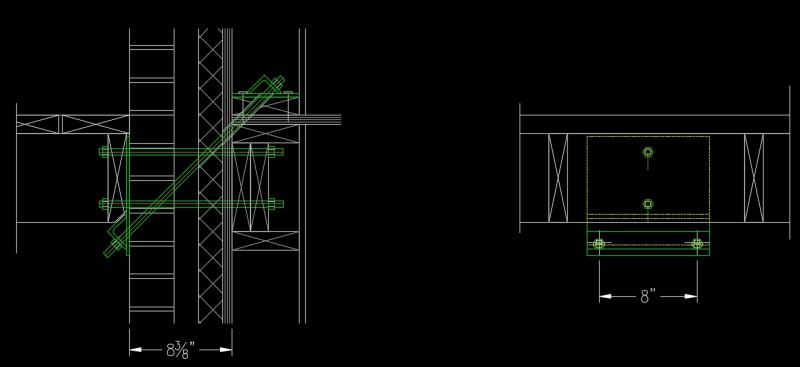Mike:
The IRC specifically says you can not apply concentrated loads, such as decks and deck ledgers, to a brick veneer on a prescriptively designed building; although they do allow stl. angle lintels over openings, which cause concentrated loads at the opening jambs. So, they do recognize that the veneer can take concentrated vert. loads. This is to keep the nail benders and DIY’ers from doing some really dumb things. There are many reasons for this, poor masonry workmanship and inspection, no real reqr’mt. for engineering involvement in the design of the entire bldg. or wall and veneer in particular, poor understanding of the way the loads are applied, and lack of adequate veneer tie back to a solid structure. As compared to the conservative and restrictive IRC prescriptive code, there are many things that can be refined and done when the bldg. design is engineered, and done to the IBC. Does the IBC actually say you can’t apply loads to a brick veneer, or is it kinda silent on the subject, and does it assume that we should use some good sound engineering judgement and experience if and when we do do this. I tend to agree with OldBldgGuy if and when it is done with care, and on a well constructed and supported brick veneer wall. Assuming there is a proper brick ledge, not just some treated 2x4 bolted to a conc. blk. wall, so that the brick is well supported vertically, there should be no question that the brick could likely handle a significant vertical deck loading. The brick veneer will also take significant loading in the plane of the wall; after all it is far stiffer in its plane than the 2x6 stud backup wall. What the brick veneer will not tolerate is lateral loads, any loads, which load the veneer perpendicular to the plane of the veneer. Thus, some kind of stand-off which bears down on the veneer should not be a problem. If it can flex a bit and apply some loading in the plane of the veneer, due to vert. or lateral loads from the deck, that should be o.k. too. But, lateral loading from the deck or from tightening the deck ledger to the bldg. floor diaphragm can not apply a loading to the veneer, perpendicular to the plane of the veneer. At the same time, this detail must allow that these lateral loads be taken through the veneer layer and be applied to the floor diaphragm in a meaningful way. And, this attachment feature must really take those loads in some substantial way into the floor diaphragm. You must do a good job of flashing and water proofing at these details. This condition is not unlike the lag screws on the deck ledger pulling the rim joist right out of the building for lack of proper attention to details.
This condition is tough to accommodate after the wall or house is built. But, on new construction, I would take a piece of pipe/tubing long enough to fit from the rim joist (or rigid sheathing) to about .25" beyond the outside face of the brick. I would weld 3/16th inch by 3x3 (4x4?) washer to the end of the pipe, and punch some holes for nails to the rim jst. and a threaded rod through the pipe. The same washers, but loose, get nailed over the bolt holes on the ledger once those are located. I would cut the pipe ends so that the pipes sloped down a few degrees to the outside, for drainage/weeping. I always set my lags or through bolts with this slope. I would have the mason place a 3/16th inch by 2x4 plate under the pipe, in a horiz. mortar joint for some improved bearing on the brick, but still some slip perpendicular to the brick plane. I would set the ledger and install the through bolts/treaded rod, and then flash over the ledger from a reglet in a horiz. brick joint just above. The lateral loads at the corners of decks, which tend to twist them off the building and the water barrier need some special attention. I think I could sleep just fine well with these details.


![[lol] [lol] [lol]](/data/assets/smilies/lol.gif)
